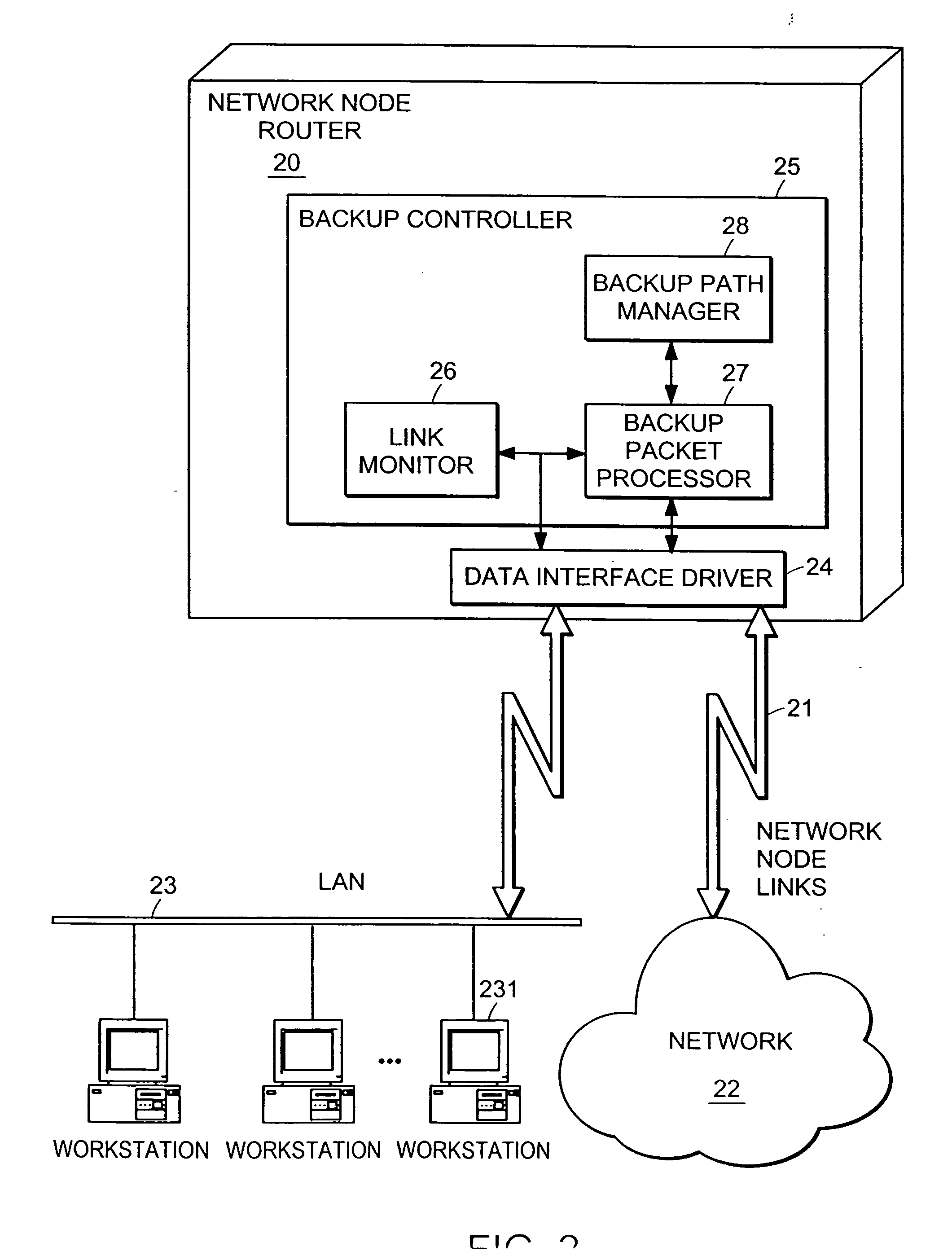Automatic protection switching using link-level redundancy supporting multi-protocol label switching
a technology of automatic protection switching and label switching, applied in the field of computer networks, can solve the problems of consuming valuable network bandwidth, affecting the convergence affecting the performance of the network as a whole,
- Summary
- Abstract
- Description
- Claims
- Application Information
AI Technical Summary
Problems solved by technology
Method used
Image
Examples
Embodiment Construction
[0016] Representative embodiments of the present invention use a label switching protocol to establish backup paths with explicit routing for use in the event of a link failure in a computer network. A label is a short, fixed length, physically contiguous, locally significant identifier which is used to identify a given data stream in a label switching network. Multi-Protocol Label Switching (MPLS) is an example of a network layer-based label switching routing protocol that uses a forwarding paradigm based on label swapping to forward data traffic. Data forwarding between two adjacent network nodes using MPLS labels is known as a label switched hop. The concatenation of one or more label switched hops defines a Label Switched Path (LSP) that allows data packets to be forwarded from one MPLS node to another MPLS node by swapping labels. Explicit routing of an LSP is when the LSP is specified by the source of a data stream. The sequence of nodes defined by the LSP are defined by a lay...
PUM
 Login to View More
Login to View More Abstract
Description
Claims
Application Information
 Login to View More
Login to View More - R&D
- Intellectual Property
- Life Sciences
- Materials
- Tech Scout
- Unparalleled Data Quality
- Higher Quality Content
- 60% Fewer Hallucinations
Browse by: Latest US Patents, China's latest patents, Technical Efficacy Thesaurus, Application Domain, Technology Topic, Popular Technical Reports.
© 2025 PatSnap. All rights reserved.Legal|Privacy policy|Modern Slavery Act Transparency Statement|Sitemap|About US| Contact US: help@patsnap.com



